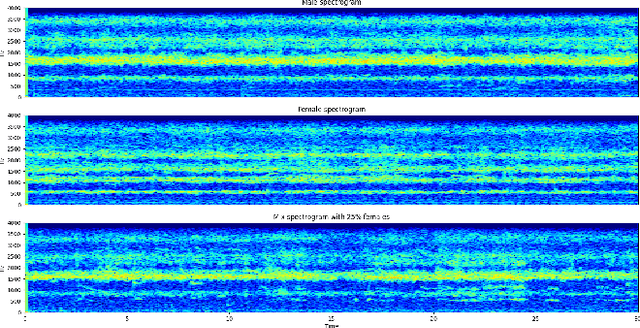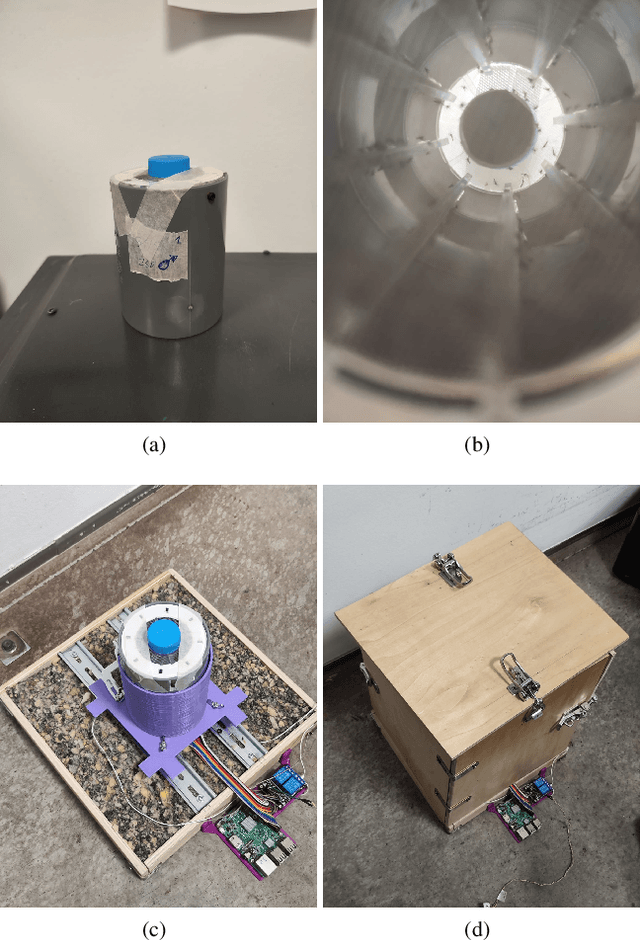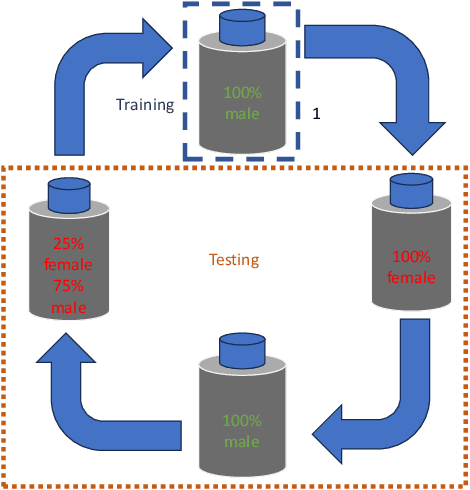Jordi Grau-Haro
Comprehensive Evaluation of CNN-Based Audio Tagging Models on Resource-Constrained Devices
Sep 19, 2025Abstract:Convolutional Neural Networks (CNNs) have demonstrated exceptional performance in audio tagging tasks. However, deploying these models on resource-constrained devices like the Raspberry Pi poses challenges related to computational efficiency and thermal management. In this paper, a comprehensive evaluation of multiple convolutional neural network (CNN) architectures for audio tagging on the Raspberry Pi is conducted, encompassing all 1D and 2D models from the Pretrained Audio Neural Networks (PANNs) framework, a ConvNeXt-based model adapted for audio classification, as well as MobileNetV3 architectures. In addition, two PANNs-derived networks, CNN9 and CNN13, recently proposed, are also evaluated. To enhance deployment efficiency and portability across diverse hardware platforms, all models are converted to the Open Neural Network Exchange (ONNX) format. Unlike previous works that focus on a single model, our analysis encompasses a broader range of architectures and involves continuous 24-hour inference sessions to assess performance stability. Our experiments reveal that, with appropriate model selection and optimization, it is possible to maintain consistent inference latency and manage thermal behavior effectively over extended periods. These findings provide valuable insights for deploying audio tagging models in real-world edge computing scenarios.
Threat Modeling for Enhancing Security of IoT Audio Classification Devices under a Secure Protocols Framework
Sep 19, 2025Abstract:The rapid proliferation of IoT nodes equipped with microphones and capable of performing on-device audio classification exposes highly sensitive data while operating under tight resource constraints. To protect against this, we present a defence-in-depth architecture comprising a security protocol that treats the edge device, cellular network and cloud backend as three separate trust domains, linked by TPM-based remote attestation and mutually authenticated TLS 1.3. A STRIDE-driven threat model and attack-tree analysis guide the design. At startup, each boot stage is measured into TPM PCRs. The node can only decrypt its LUKS-sealed partitions after the cloud has verified a TPM quote and released a one-time unlock key. This ensures that rogue or tampered devices remain inert. Data in transit is protected by TLS 1.3 and hybridised with Kyber and Dilithium to provide post-quantum resilience. Meanwhile, end-to-end encryption and integrity hashes safeguard extracted audio features. Signed, rollback-protected AI models and tamper-responsive sensors harden firmware and hardware. Data at rest follows a 3-2-1 strategy comprising a solid-state drive sealed with LUKS, an offline cold archive encrypted with a hybrid post-quantum cipher and an encrypted cloud replica. Finally, we set out a plan for evaluating the physical and logical security of the proposed protocol.
Automatic Counting and Classification of Mosquito Eggs in Field Traps
May 31, 2024Abstract:The analysis of the field traps where the mosquitoes insert their eggs is vital to check that the sterile insect technique (SIT) is working properly. This is because the number of hatched eggs may indicate that the sterile males are not competing with the wild ones. Nowadays, the study of the traps is done manually by microscope and is very time-consuming and prone to human error. This paper presents an automatic trap survey. For this purpose, a device has been designed that automatically scans the slat obtaining different overlapping photos. Subsequently, the images are analyzed by a Mask-RCNN neural network that segments the eggs and classifies them into 2 classes: full or hatch
Practical aspects for the creation of an audio dataset from field recordings with optimized labeling budget with AI-assisted strategy
May 28, 2024Abstract:Machine Listening focuses on developing technologies to extract relevant information from audio signals. A critical aspect of these projects is the acquisition and labeling of contextualized data, which is inherently complex and requires specific resources and strategies. Despite the availability of some audio datasets, many are unsuitable for commercial applications. The paper emphasizes the importance of Active Learning (AL) using expert labelers over crowdsourcing, which often lacks detailed insights into dataset structures. AL is an iterative process combining human labelers and AI models to optimize the labeling budget by intelligently selecting samples for human review. This approach addresses the challenge of handling large, constantly growing datasets that exceed available computational resources and memory. The paper presents a comprehensive data-centric framework for Machine Listening projects, detailing the configuration of recording nodes, database structure, and labeling budget optimization in resource-constrained scenarios. Applied to an industrial port in Valencia, Spain, the framework successfully labeled 6540 ten-second audio samples over five months with a small team, demonstrating its effectiveness and adaptability to various resource availability situations.
Female mosquito detection by means of AI techniques inside release containers in the context of a Sterile Insect Technique program
Jun 19, 2023



Abstract:The Sterile Insect Technique (SIT) is a biological pest control technique based on the release into the environment of sterile males of the insect species whose population is to be controlled. The entire SIT process involves mass-rearing within a biofactory, sorting of the specimens by sex, sterilization, and subsequent release of the sterile males into the environment. The reason for avoiding the release of female specimens is because, unlike males, females bite, with the subsequent risk of disease transmission. In the case of Aedes mosquito biofactories for SIT, the key point of the whole process is sex separation. This process is nowadays performed by a combination of mechanical devices and AI-based vision systems. However, there is still a possibility of false negatives, so a last stage of verification is necessary before releasing them into the environment. It is known that the sound produced by the flapping of adult male mosquitoes is different from that produced by females, so this feature can be used to detect the presence of females in containers prior to environmental release. This paper presents a study for the detection of females in Aedes mosquito release vessels for SIT programs. The containers used consist of PVC a tubular design of 8.8cm diameter and 12.5cm height. The containers were placed in an experimental setup that allowed the recording of the sound of mosquito flight inside of them. Each container was filled with 250 specimens considering the cases of (i) only male mosquitoes, (ii) only female mosquitoes, and (iii) 75% males and 25% females. Case (i) was used for training and testing, whereas cases (ii) and (iii) were used only for testing. Two algorithms were implemented for the detection of female mosquitoes: an unsupervised outlier detection algorithm (iForest) and a one-class SVM trained with male-only recordings.
 Add to Chrome
Add to Chrome Add to Firefox
Add to Firefox Add to Edge
Add to Edge